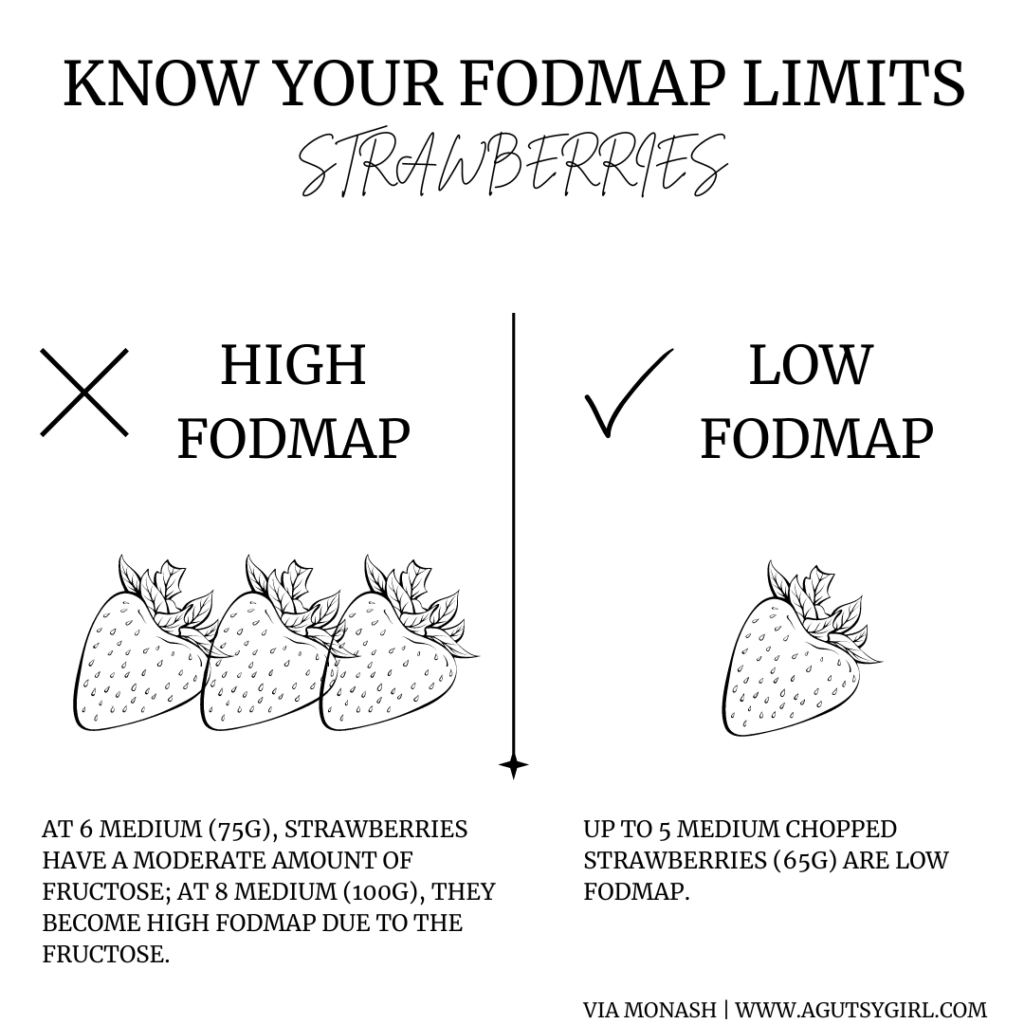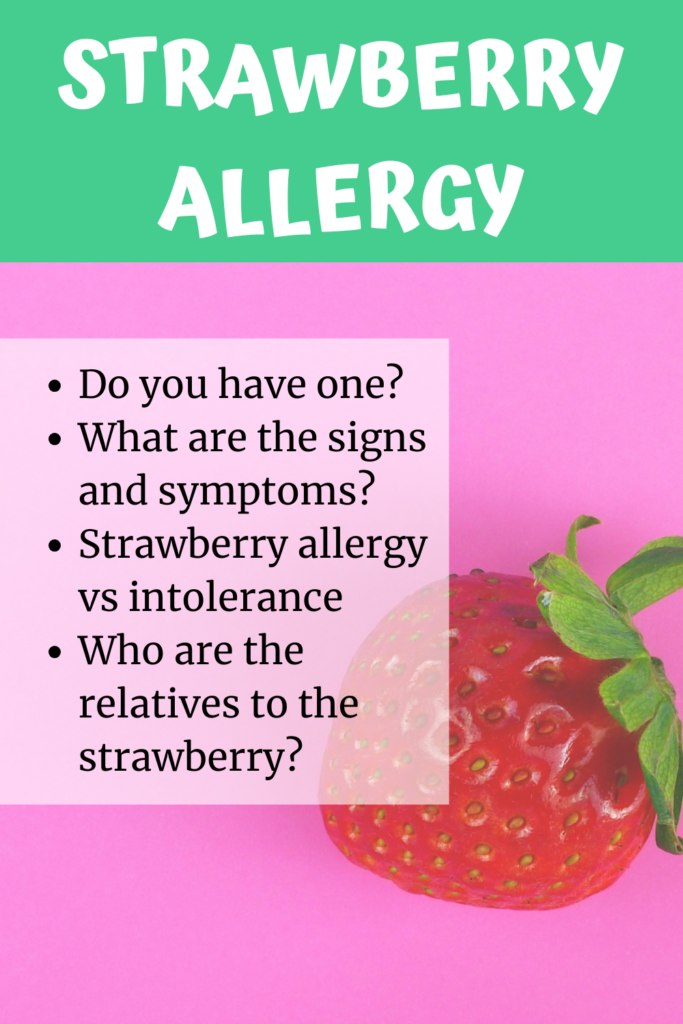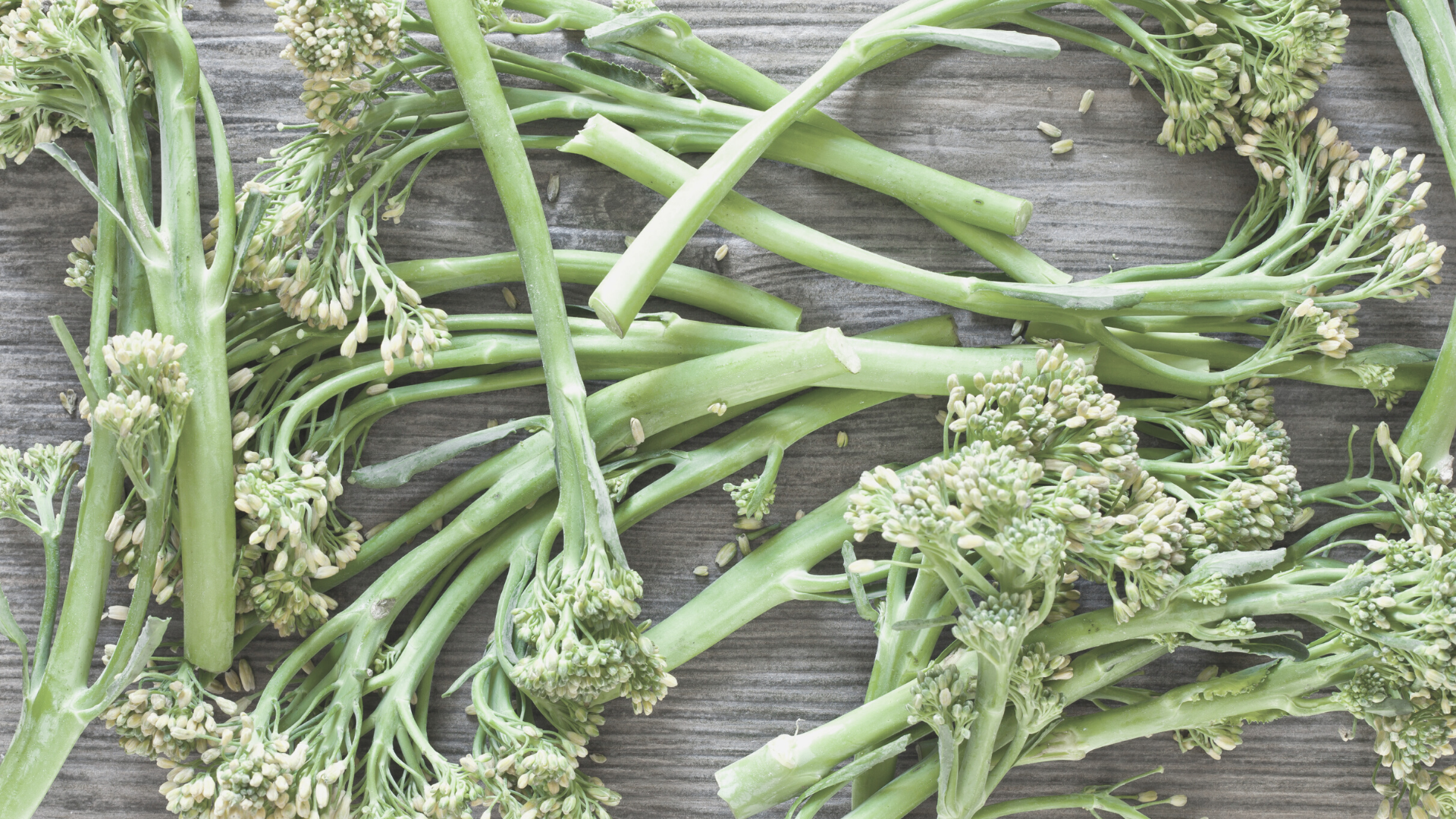‘Tis the season for strawberries. Well, unless a strawberry allergy (or intolerance) is on your “suspect foods” list.
Strawberries are high in fiber, full of antioxidants, incredible in the summer, and low FODMAP.
But, for some people, they could be problematic.

(Image taken from Reasonable SIBO)
Strawberry allergies and intolerances are rare, and the symptoms of either vary between people.
Strawberry Allergy
Click HERE to save this post for later.

Symptoms range from strange feelings in the mouth after eating one to anaphylaxis in occasional cases.
The most common symptoms are between these two extremes and are similar to symptoms of any other food allergy:
- Throat tightness
- Itching or tingling mouth
- Skin rashes (hives, eczema)
- Wheezing
- Cough
- Congestion
- Nausea
- Stomach pains
- Vomiting
- Diarrhea
- Dizziness
- Lightheadedness
Source: HERE
For some people, cooking strawberries makes them better tolerated.
The heat denatures proteins that the body is potentially targeting for reaction and can eliminate the reaction or make it less severe.
Strawberry Allergy vs. Strawberry Intolerance
There are two ways you may react to strawberries- a food allergy or food intolerance.
A food allergy is caused by an immune reaction to the strawberry.
The body treats it similarly to a virus or bacteria and mounts an immune response with histamine, which is the underlying chemical causing the physical symptoms you experience.
Compared to intolerances which could take longer to manifest, food allergy reactions typically occur immediately or within a few hours.
A food intolerance is not an immune reaction.
It may be caused by a lack of enzymes to digest the food, food poisoning, or an unhealthy gut.
How to Clean Strawberries
Regardless of how well you tolerate strawberries, it’s always a good idea to clean the fruit well.
Strawberries are #1 on the Environmental Working Group’s list of “Dirty Dozen”- a list of the 12 most pesticide-polluted fruits and veggies.
Washing with water may not be enough to remove pesticides or pests like worms inside the strawberries.
Soaking your strawberries in baking soda or saltwater is an easy way to clean them before eating.
Relatives of Strawberries
The strawberry fruit is in the Rosaceae family.
This family of fruits also includes:
- Peaches
- Cherries
- Apples
- Blackberries
- Raspberries
Out of this family, raspberries are the most common allergen (source).
Allergies to fruits in this family have also been linked to pollen allergies or hay fever.
If you have a strawberry allergy, chances are that you already know. However, that’s not to say you can’t develop one in the future.
But if it’s an intolerance, simply keep meticulous notes in your journal to understand where strawberries fit onto your own plate.
You can take a food intolerance test, but remember that many times the reason something shows up on a food intolerance test is truly just because your gut is “leaky.”
If you’re keeping a food journal, it’s pretty much the same thing 🙂

If you liked this post, you might also enjoy:
- Does Coffee Cause Gas and Bloating {Food Intolerance + A Fun Way To Test}
- Why Can’t I Digest Eggs?
- How to Journal to Identify Food Intolerances
Xox,
SKH
🤰 bloating be gone! weight loss through optimal gut health for women
💃ʜᴇᴀʟ ʏᴏᴜʀ ɢᴜᴛ. ʜᴇᴀʟ ʏᴏᴜʀ ʟɪfe.
🫶🏻 founder gutbyome.com




![SIBO Diet [Beyond a diet and moving forward from SIBO]](https://agutsygirl.com/wp-content/uploads/2018/06/pink-featured-copy-2.png)

